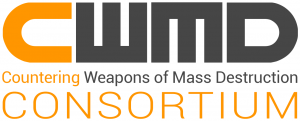Who We Are
The Countering Weapons of Mass Destruction (CWMD) Consortium was formed in response to the government’s expressed interest to establish an Other Transaction Agreement (OTA) with an eligible entity or group of entities, to include industry, academic, and not-for-profit partners, for advanced development efforts to support agencies that have a need to prototype new technologies related to Countering Weapons of Mass Destruction.
The Joint Program Executive Office for Chemical, Biological, Radiological and Nuclear Defense (JPEO-CBRND) is always looking for innovative and effective solutions to counter weapons of mass destruction. The usage of an OTA allows government to partner with the CWMD to leverage cutting-edge R&D and develop prototypes. This gives agencies an agile and flexible way to develop CWMD prototypes using new and innovative technology.
The OTA Consortium is an enterprise partnership between the US Government (JPEO-CBRND) and the CWMD Consortium connected through a “contract-like” OTA. This OTA operates outside the Federal Acquisition Regulations.
The CWMD provides the flexibility for better public and private collaboration by providing access to innovative concepts, ideas, and technologies from traditional and non-traditional technology providers. Through the OTA with the CWMD Consortium, the JPEO-CBRND is looking to work with new industry partners to provide soldiers with safe and effective weapons of mass destruction countermeasures.
The CWMD Consortium is currently recruiting a broad and diverse group of interested parties that includes representatives from large businesses, small businesses, traditional and non-traditional government contractors, academic research institutions, and not-for-profit organizations with collective expertise in the technology areas specifically related to the JPEO-CBRND mission.
What We Do
The consortium focuses on the developing technologies such as radiation sensor, sonar, cargo X-ray, and chemical detection to stop attacks before they occur, technologies to gain situational awareness and understand the actions of adversaries, including technologies for detection, analytics, vulnerability assessments, and operational readiness, and technologies to protect individuals and groups, including ocular, respiratory, percutaneous, and materiel protection.
